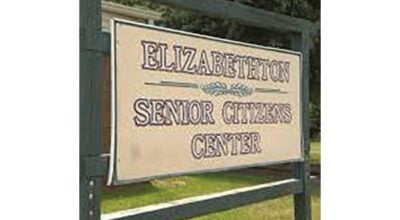Polio epidemic of 1953 hit Elizabethton community hard
Published 5:56 pm Friday, April 17, 2020
1 of 1
The COVID-19 epidemic is not the first time the Elizabethton community has had to deal with an epidemic. Before this there was the Spanish flu in 1918. A look back at local deaths in that era also revealed that a large number of people died of diphtheria, tuberculosis, measles, and other diseases.
Also, in the summer of 1953, several cases of polio, or infantile paralysis as it was referred to then, shook the community, resulting in a quarantine of children 12 years old and under in an effort to halt a spread of the disease.
Dr. W.G. Frost, head of the Carter County Health Board, noted in mid-July that 20 cases of infantile paralysis had been reported in recent weeks. The quarantine, imposed July 17, restricted children under 13 to their homes. “No child under 13 will be permitted to leave or enter the county,” Frost said in a July 1953 STAR news article. “Any child in this age group found in a public place or on a street with or without his parents will be questioned by police and returned home,” Dr. Frost said.
Theaters, churches, swimming pools, and other forms of public gatherings were required to deny admittance to children these ages and under according to an Elizabethton STAR article. “Riding in cars will be permissible for children providing the car does not stop in the presence of other people. It would be difficult to enforce a backyard isolation but parents are advised that children should be kept in their own yard and away from contact with other children,” the article further stated.
The reason for the quarantine according to Dr. Frost was that for awhile the disease was widely scattered and showed no evidence of person-to-person communication. However, several of the new cases were suspected of being contacts of previous cases.
In the home, parents were advised of exposing their children to excessive heat, see that children rested as much as possible, practiced good personal hygiene, avoided all factors leading to a cold, eat a well-balanced diet, and see the family physician if they suspected their child might have polio. They were also advised to “forget about polio as much as possible in the presence of their children.”
Just as there is a shortage of testing and supplies today, the same was true in the polio epidemic. Dr. R.R. Hutchison, Tennessee Health Commissioner, told Dr. Frost that he requested but failed to obtain a quantity of gamma globulin for inoculations against polio in Carter County. The request was denied, he said, on the grounds that the polio was not prevalent enough to warrant allocation of the serum, which at the time was available only in limited amounts.
Previous information had indicated that at least 45 cases would be “required” before gamma globulin could be secured, but the requirement was later relaxed, allowing for the gamma globulin inoculations.
The request for the gamma globulin was finally approved, and for three days – July 23-25 – a mass inoculation took place with approximately 10,000 children within the age group of six months to 10 years given the serum. Vaccination sites were set up in the City at the Elizabethton Armory, at Hampton, Happy Valley, Unaka, Roan Mountain, and Elk Mills.
Lollipops were given to the children once they received the shot to help ease wounded pride if not seats said one STAR headline.
Before the day was over doctors were calling the day “Operation Thumb-Thumb” as they pressed the plunger hour after hour for the shots. Other names applied to the blood derivative included “Galloping’ Goblin,” and it surely was to some of the youngsters…a frightening goblin.
When all was said and done, 9,226 children had been inoculated at the three-day “shooting.”
During the quarantine, WBEJ-Radio and the Carter County Ministerial Association broadcast various church services for the children as well as a Bible quiz and a musical program. The programs were presented at 10:45 a.m. Sunday with a special sermon for children and from 1:30 to 2 p.m.
The outbreak in Carter County began on June 5 when the first patient became ill. There were no more reported cases until June 15. The peak was reached the week of June 28 to July 4 which was followed by a gradual decline the next four weeks. At Johnson City, hospital authorities asked the National Foundation of Infantile Paralysis to send a doctor to aid in the treatment of 31 polio patients.
The Tn. Department of Health reported 31 new cases in a week (mid-July), raising the state’s total of cases to 112 for the year to date.
In Carter County, the state noted that between April 1, 1953, and July 23, 1953, 26 cases of polio had been reported. Approximately 77 percent of the cases were said to be paralytic.
The highest rate occurred in the one to four age group.
Prior to 1953, the greatest polio incident occurred in 1948 when 10 cases were reported in the county. Until 1953, only paralytic cases were reported in Tennessee.The onset of the last cases occurred July 21.Health authorities in many cities were considering emergency measures to check the outbreak.
The 1953 quarantine in Carter County was lifted July 30.
Following the quarantine one supermarket in town which had looked askance at the youngsters reading its comic books – free – and then returning them to the shelves, ran an advertisement in the STAR welcoming the youngsters back to town. The ad noted that the store would provide seats for them to set and read comic books to their hearts’ content.
In nearby Bristol, four new cases were reported during the week of July 16 to run the two-week total to 28. Two of the victims died.





